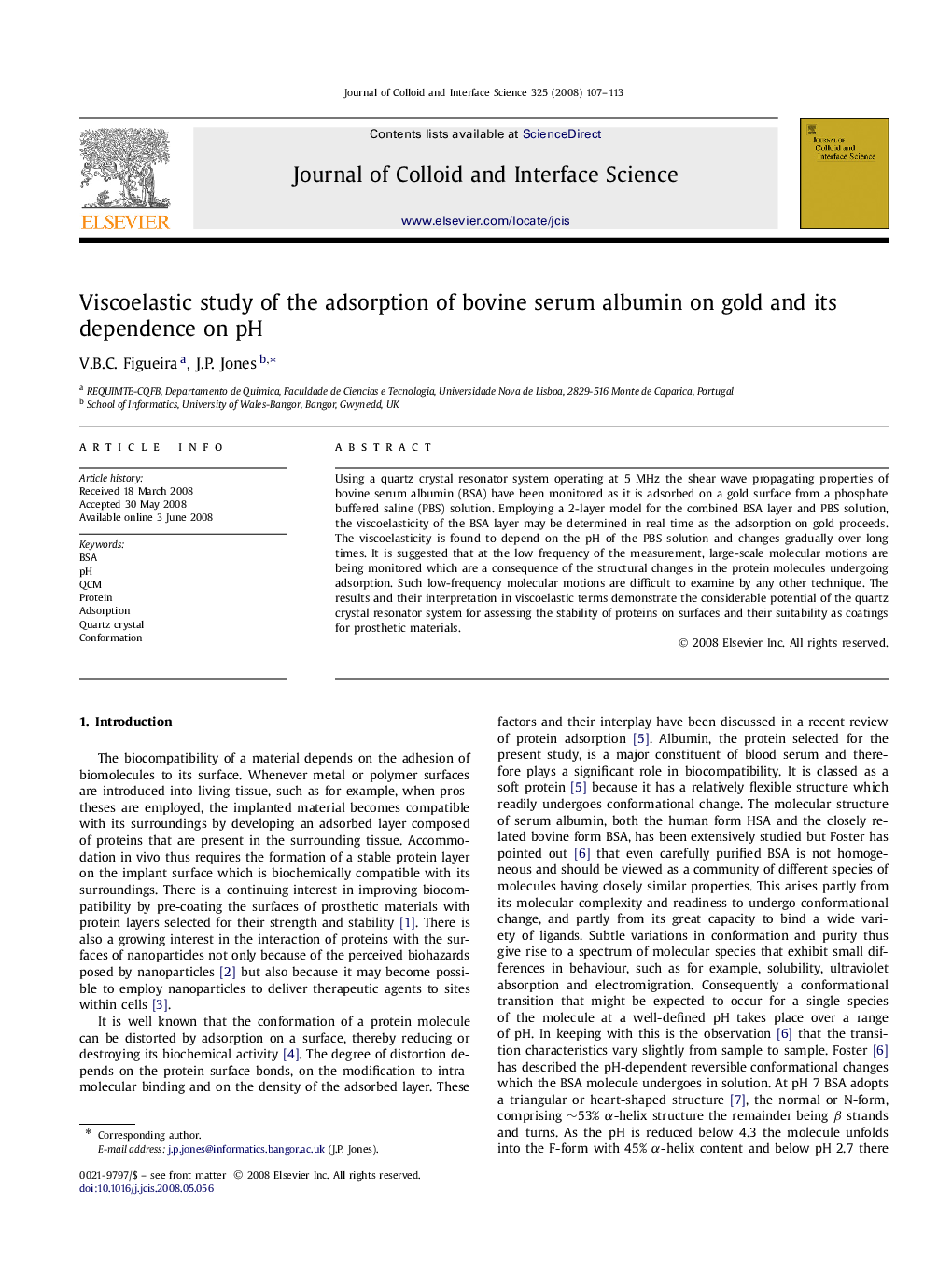| Article ID | Journal | Published Year | Pages | File Type |
|---|---|---|---|---|
| 611048 | Journal of Colloid and Interface Science | 2008 | 7 Pages |
Using a quartz crystal resonator system operating at 5 MHz the shear wave propagating properties of bovine serum albumin (BSA) have been monitored as it is adsorbed on a gold surface from a phosphate buffered saline (PBS) solution. Employing a 2-layer model for the combined BSA layer and PBS solution, the viscoelasticity of the BSA layer may be determined in real time as the adsorption on gold proceeds. The viscoelasticity is found to depend on the pH of the PBS solution and changes gradually over long times. It is suggested that at the low frequency of the measurement, large-scale molecular motions are being monitored which are a consequence of the structural changes in the protein molecules undergoing adsorption. Such low-frequency molecular motions are difficult to examine by any other technique. The results and their interpretation in viscoelastic terms demonstrate the considerable potential of the quartz crystal resonator system for assessing the stability of proteins on surfaces and their suitability as coatings for prosthetic materials.
Graphical abstractAdsorbed serum albumin molecules form a monolayer (a) which is assumed to be acoustically uniform (b). The viscosity (●) and elasticity (□) of the layer depend on the pH at formation (c).Figure optionsDownload full-size imageDownload as PowerPoint slide
